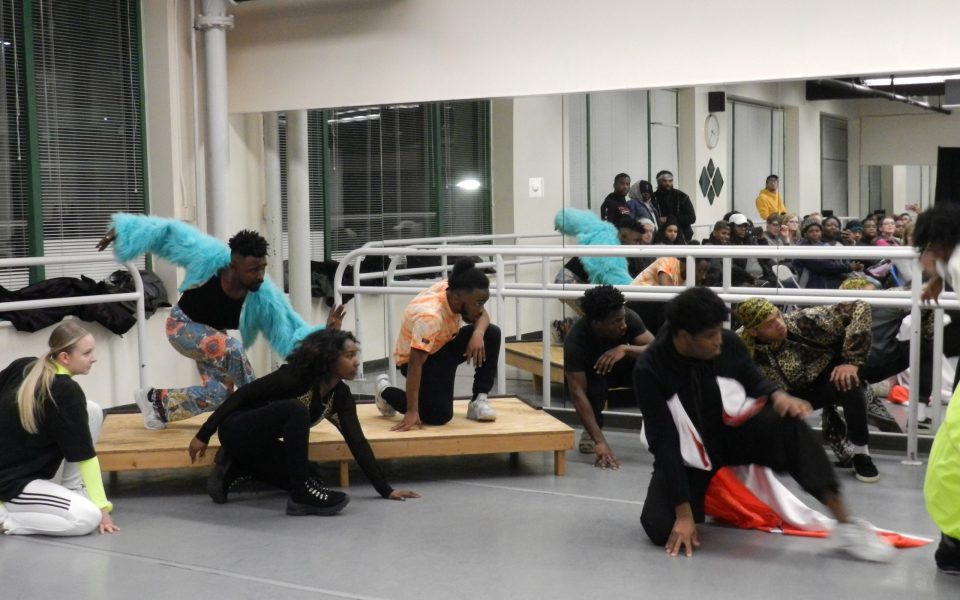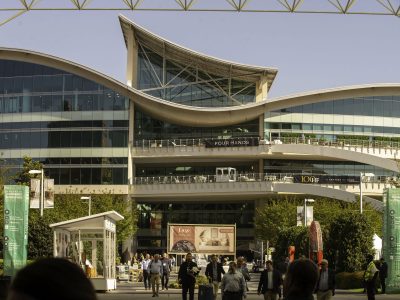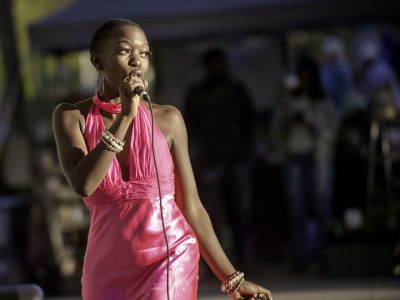“I’d
like to invite you to take off your shoes,” an artist known by A. Litaker says.
“Go ahead and find a space on the floor, and lie down.”
Audience
members lower themselves to the ground, a few sharing hesitant glances before
removing their coats and boots and joining in. Soon they fill the floor space
of Studio 323 in the Greensboro Cultural Center. They each connect their backs
to the floor, knees up and heels flat, as guided by Litaker. She asks them to
immerse themselves more, covering their eyes and really assessing their bodies.
The
routine contrasts with what most would expect from a dance performance, but
Litaker and her somatic exercises open the Dance Project’s Artist in Residence
Showcase. The Friday night featured four dancers, Litaker, along with Dylan
Reddish, Anne Edwards, and LeDarius Parker, sharing a culmination of their
practices from the past semester. The four, along with Tarayjah Hoey-Gordon,
were granted use of the studios for the past semester as part of their
residency.
Now
in its fourth semester, the program offers a chance for dancers and
choreographers at all stages in their careers and from all disciplines to use
the studio space for free. As artists in residence, they work without
parameters or financial pressure, allowing them the opportunity to fine-tune
and workshop pieces in progress, begin large projects, and experiment.

Anne
Edwards, fresh from matriculation at Hollins University over the summer, used
her first space outside of academia to find her own footing. The months brought
her introspection, a theme she hoped to convey in what she calls the Grey
Shirt Series.
“It
was instrumental in creating my own artistic process,” she says.
Edwards
begins with a look off into the distance, past the crowd, as sounds of static ring
out over the speakers. She vaults each arm over her head, circling her shoulders.
She spins into a kneeling position, hands tense. Each finger opens and closes
from her fist, her gaze regarding each digit as she works through both hands.
The white noise continues, leaving nothing to think about other than the
movement.
After
using much of her time to workshop a collaboration called “Love Notes from the
Skeletons in My Closet,” Reddish offered the audience a lighter note. Prior to
her dance, she holds up a bundle of papers — passes from a nearby parking
deck, which Reddish drew on. Each drawing Reddish has interpreted into a
movement.
“I
call it noodling and doodling,” Reddish says.
A
series of high-energy spins, jumps and steps begins to calm as she falls back.
Once on the ground, she raises her arms up, forming a 90-degree angle. She
snaps. A roll brings her back to the starting position, hands in the air. She
snaps again.

LeDarius
Parker used his time at the residency to test out a form new to him — theatrical
dance. During the show, he moves the chairs, making a runway that leaves two open
areas on each end of the studio. These serve as the stages for his 21-minute
long piece — “Human Nature” — which involves an entire crew of dancers.
“It’s
the first piece I get to do that I feel is really open creatively,” he says.
Each
half of the crew takes to a side of the room. One half, decked out in neon and
patterns dances sporadically, moving unpredictably and intensely. The other
makes each small gesture purposeful, wearing head-to-toe black. Parker set the
story as a tale of going against societal norms and assimilation.
“Human
Nature,” Parker explains, also confirms his aim to produce a larger hip-hop
fantasy show titled Fairy Kingdom, which he hopes to take to New York
City. He says the semester allowed him to balance his street dance background
with the dance-studio world.
“Being from both worlds,” he says, “I hear both
sides of the story and can bring both worlds together.”
Join the First Amendment Society, a membership that goes directly to funding TCB‘s newsroom.
We believe that reporting can save the world.
The TCB First Amendment Society recognizes the vital role of a free, unfettered press with a bundling of local experiences designed to build community, and unique engagements with our newsroom that will help you understand, and shape, local journalism’s critical role in uplifting the people in our cities.
All revenue goes directly into the newsroom as reporters’ salaries and freelance commissions.





Leave a Reply